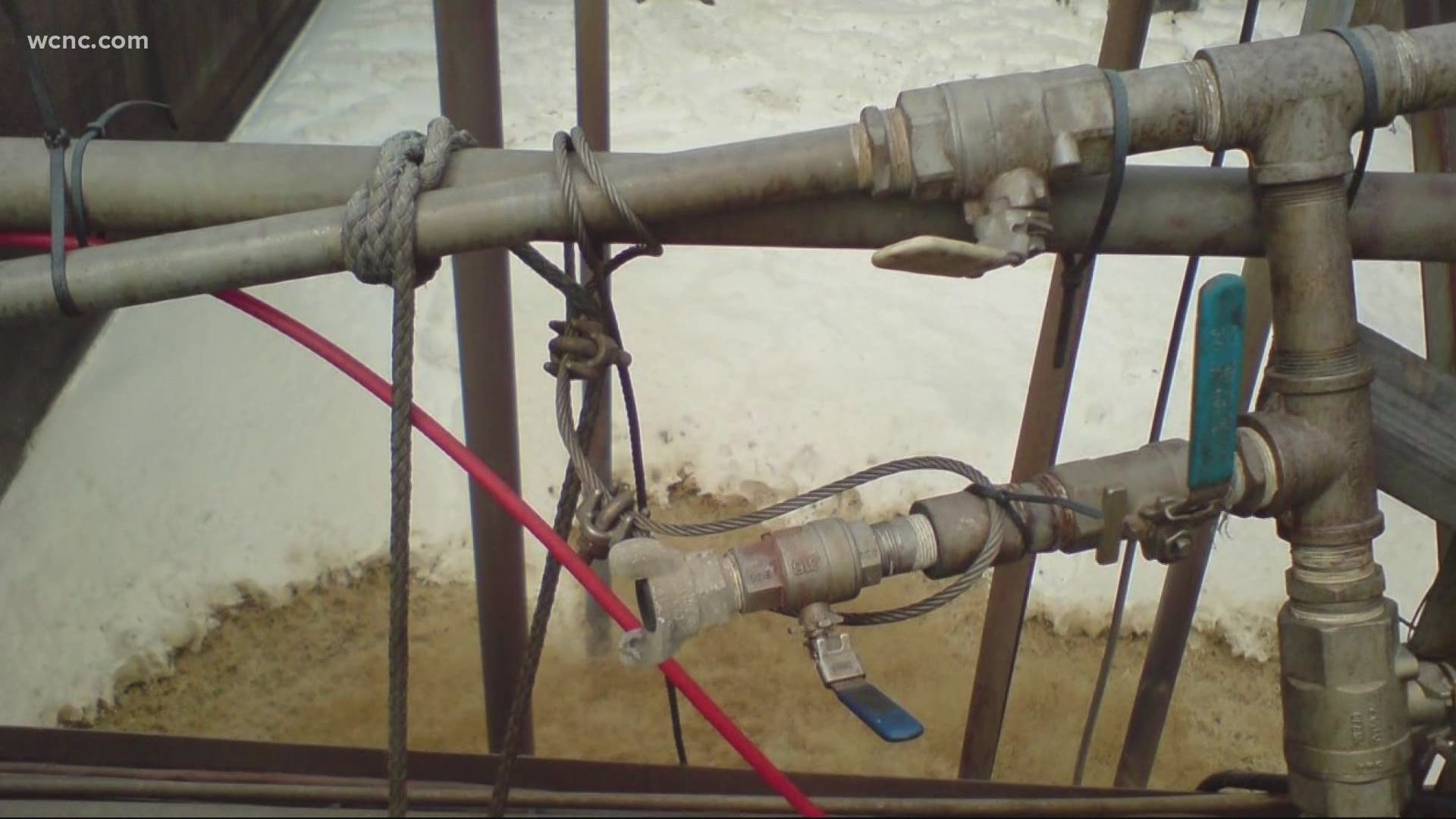CATAWBA, S.C. — Newly-obtained videos, pictures, and documents reveal problems Environmental Protection Agency (EPA) inspectors found during an April 15 inspection of New Indy Containerboard's mill in Catawba, South Carolina.
Among the issues inspectors found, according to a report released two months after the inspection, includes a post aeration tank covered in foam and emitting a "noticeably foul odor," two separate instances when the high hydrogen sulfide levels caused the inspectors' monitoring alarms to trigger, and aerators unable to function due to a high buildup of solids in the aeration basin.
The visit preceded emergency orders filed by both the EPA and the South Carolina Department of Health and Environmental Control last month, which demanded New Indy take steps to reduce hydrogen sulfide emissions.
Regulators have connected those emissions to a foul odor plaguing homeowners living near the plant, who allege the odor has caused them nausea, headaches, and nose bleeds.
When EPA inspectors visited the facility on April 15, 2021, they spent 10 hours on-site, focusing on the company's wastewater treatment process.
According to visit logs, EPA inspectors noted problems within 30 minutes of their guided tour at a post aeration tank.
Inspectors described the tank as the final step in the company's wastewater treatment process before the treated water is released into the Catawba River.
Inspectors took a picture at the top of the tank, which showed foam covering the surface.
According to inspectors, the tank had a rotten eggs odor, and it triggered the hydrogen sulfide alarms they were wearing.
Around noon, inspectors visited an aeration basin, and, according to the report and a video taken by an inspector, the company's aerators were "kicking up large amounts of foam."
Inspectors also noted, "some aerators were unable to operate due to the large buildup of solids."
Inspectors further noted an odor in the area, and later that afternoon, inspectors reported their hydrogen sulfide alarms once again going off.
Over the last two months, WCNC Charlotte has made multiple attempts to interview New-Indy's leaders, and each time, those requests have been declined.
Wake Up Charlotte To Go is a daily news and weather podcast you can listen to so you can start your day with the team at Wake Up Charlotte.
SUBSCRIBE: Apple Podcasts || Spotify || Stitcher || TuneIn || Google Podcasts
All of WCNC Charlotte's podcasts are free and available for both streaming and download. You can listen now on Android, iPhone, Amazon, and other internet-connected devices. Join us from North Carolina, South Carolina, or on the go anywhere.
Contact Brandon Golder at bgoldner@wcnc.com and follow him on Facebook, Twitter and Instagram.


